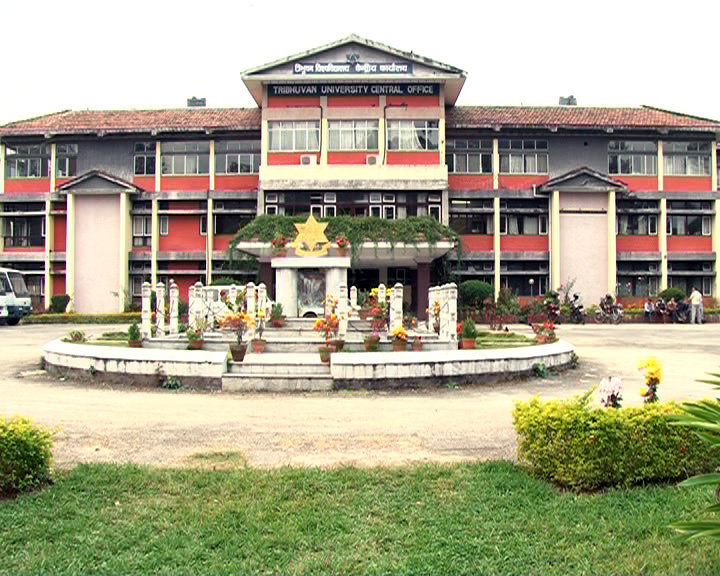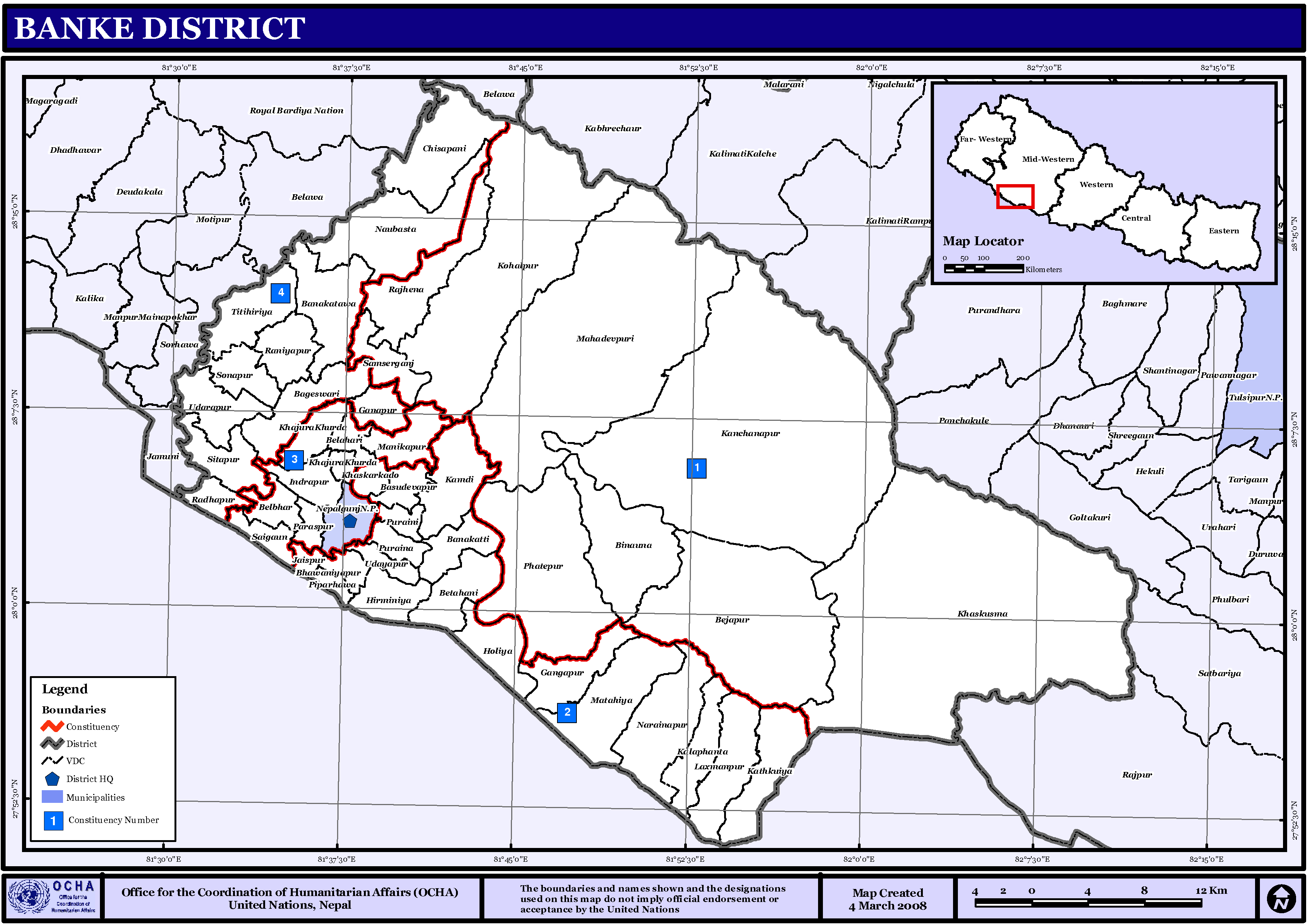|
Mahendra Multiple Campus, Nepalgunj
Mahendra Multiple Campus, Nepalgunj ( ne, महेन्द्र बहुमुखी क्याम्पस, नेपालगन्ज) is a public co-educational institution located in Nepalgunj city in western Nepal. It is one of the campuses affiliated to the Tribhuvan University. It is named after the King Mahendra. The campus was established in as ''Narayan Inter College''. It was renamed to Mahendra Degree College in 2018 BS and finally in 2028 BS, it was renamed to Mahendra Multiple Campus in 2028 BS based on the ''New Education Planning''. Infrastructures The campus has 17 Bigha The bigha (also formerly beegah) is a traditional unit of measurement of area of a land, commonly used in India (including Uttarakhand, Haryana, Himachal Pradesh, Punjab, Madhya Pradesh, Uttar Pradesh, Bihar, Jharkhand, West Bengal, Assam, Gujarat ...s of land. The infrastructures of the campus is considered to be in deteriorated state. There are about 109 teachers and 65 administr ... [...More Info...] [...Related Items...] OR: [Wikipedia] [Google] [Baidu] |
Co-educational
Mixed-sex education, also known as mixed-gender education, co-education, or coeducation (abbreviated to co-ed or coed), is a system of education where males and females are educated together. Whereas single-sex education was more common up to the 19th century, mixed-sex education has since become standard in many cultures, particularly in Western countries. Single-sex education remains prevalent in many Muslim countries. The relative merits of both systems have been the subject of debate. The world's oldest co-educational school is thought to be Archbishop Tenison's Church of England High School, Croydon, established in 1714 in the United Kingdom, which admitted boys and girls from its opening onwards. This has always been a day school only. The world's oldest co-educational both day and boarding school is Dollar Academy, a junior and senior school for males and females from ages 5 to 18 in Scotland, United Kingdom. From its opening in 1818, the school admitted both boys and gi ... [...More Info...] [...Related Items...] OR: [Wikipedia] [Google] [Baidu] |
Tribhuvan University
Tribhuvan University (TU; ne, त्रिभुवन विश्वविद्यालय) is a public university located in Kirtipur, Kathmandu. Established in 1959, TU is the oldest university in Nepal. In terms of enrollment, it is the 12th largest university in the world. The college offers 1000 undergraduate and 500 postgraduate programs across a wide range of disciplines. Additionally, the institution has 30 constituent campuses and over 600 affiliated colleges across the country. Because it is government-funded, the tuition fees are less expensive than those of private (affiliated) college campuses. History Established on 25 June 1959 (or 11 Ashar 2016 BS), Tribhuvan University is the oldest and largest university in Nepal. The university was named after the late King Tribhuvan. In its early years, all the postgraduate classes were held at Tripureshwor Campus. The administrative office was also located in Tripureshwor. It was only in 1967 that the university was ... [...More Info...] [...Related Items...] OR: [Wikipedia] [Google] [Baidu] |
Nepalgunj
Nepalgunj (), also spelled Nepalganj, is a Sub-Metropolitan City in Banke District, Nepal. It lies on the Terai plains near the southern border with Bahraich district in Uttar Pradesh, India. Nepalgunj is 153 kilometers south-west of Ghorahi and 16 km south of Kohalpur. Former Village Development Committee: Udayapur, Bhawaniyapur, Piprahawa, Jaispur, Paraspur, Indrapur, Khaskarkado, Bashudevpur, Manikapur and Puraina were added to territory in order to make it Sub metropolitan city on 2071 Paush 28 and later Puraini was also added in list on 2072 Paush 21. Further, while restructuring of local levels nationwide, ward no. 23 (former Indrapur VDC) was taken out to Janaki Rural Municipality and ward no. 7 of Hirminiya VDC was added to Nepalgunj. Demographics The 2011 census counted 73,779 inhabitants with 20% growth since 2001. Currently it is estimated around 1,60,000 inhabitants in Nepalgunj city. Culture and religion Nepalgunj has a diverse culture with peo ... [...More Info...] [...Related Items...] OR: [Wikipedia] [Google] [Baidu] |
Banke District
Banke District ( ne, बाँके जिल्ला , a part of Lumbini Province, is one of the 77 districts of Nepal. The district, located in midwestern Nepal with Nepalganj as its district headquarters, covers an area of and had a population of 385,840 in 2001 and 491,313 in 2011. There are three main cities in the Banke District: Nepalganj, Kohalpur and Khajura Bajaar. Geography and Climate Banke is bordered on the west by ''Bardiya district''. ''Rapti zone's'' ''Salyan'' and ''Dang Deukhuri Districts'' border to the north and east. To the south lies ''Uttar Pradesh'', India, a country in Asia; specifically ''Shravasti'' and ''Bahraich districts'' of ''Awadh''. East of Nepalganj the international border follows the southern edge of the ''Dudhwa Range'' of the ''Siwaliks''. Most of the district is drained by the ''Rapti'', except the district's western edge is drained by the ''Babai''. Rapti and Babai cross into Uttar Pradesh, a state in India, Nepal's neighboring c ... [...More Info...] [...Related Items...] OR: [Wikipedia] [Google] [Baidu] |
Nepal
Nepal (; ne, नेपाल ), formerly the Federal Democratic Republic of Nepal ( ne, सङ्घीय लोकतान्त्रिक गणतन्त्र नेपाल ), is a landlocked country in South Asia. It is mainly situated in the Himalayas, but also includes parts of the Indo-Gangetic Plain, bordering the Tibet Autonomous Region of China to the north, and India in the south, east, and west, while it is narrowly separated from Bangladesh by the Siliguri Corridor, and from Bhutan by the Indian state of Sikkim. Nepal has a diverse geography, including fertile plains, subalpine forested hills, and eight of the world's ten tallest mountains, including Mount Everest, the highest point on Earth. Nepal is a multi-ethnic, multi-lingual, multi-religious and multi-cultural state, with Nepali as the official language. Kathmandu is the nation's capital and the largest city. The name "Nepal" is first recorded in texts from the Vedic period of the India ... [...More Info...] [...Related Items...] OR: [Wikipedia] [Google] [Baidu] |
King Mahendra
Mahendra Bir Bikram Shah Dev ( ne, श्री ५ महाराजाधिराज महेन्द्र वीर विक्रम शाह देव; 11 June 1920 – 31 January 1972) was the King of Nepal from 13 March 1955 until his death in 1972. Following the 1960 coup d'état, he established the partyless Panchayat system which governed the country for 28 years until the introduction of multiparty democracy in 1990. During his reign, Nepal experienced a period of industrial, political and economic change that opened it to the rest of the world for the first time after the 104-year-long reign of the Rana rulers, who had kept the country under an isolationist policy, came to an end in 1951. Early life King Mahendra was born in the year 11 June 1920 (1977 B.S) at the Narayanhiti Palace to King Tribhuvan of Nepal. King Mahendra was the eldest child of King Tribhuvan and Queen Kanti. Under the Rana dynasty, the power of the king was reduced to that of a figure ... [...More Info...] [...Related Items...] OR: [Wikipedia] [Google] [Baidu] |
Bikram Sambat
Vikram Samvat (IAST: ''Vikrama Samvat''; abbreviated VS) or Bikram Sambat B.S. and also known as the Vikrami calendar, is a Hindu calendar historically used in the Indian subcontinent. Vikram Samvat is generally 57 years ahead of Gregorian Calendar, except during January to April, when it is ahead by 56 years. Alongside Nepal Sambat, it is one of the two official calendars used in Nepal. In India, it is used in several states. The traditional Vikram Samvat calendar, as used in India, uses lunar months and solar sidereal years. The Nepali Bikram Sambat introduced in 1901 CE, also uses a solar sidereal year. History A number of ancient and medieval inscriptions used the Vikram Samvat. Although it was reportedly named after the legendary king Vikramaditya, the term "Vikrama Samvat" does not appear in the historical record before the 9th century; the same calendar system is found with other names, such as Krita and Malava. In colonial scholarship, the era was believed to be bas ... [...More Info...] [...Related Items...] OR: [Wikipedia] [Google] [Baidu] |
Bigha
The bigha (also formerly beegah) is a traditional unit of measurement of area of a land, commonly used in India (including Uttarakhand, Haryana, Himachal Pradesh, Punjab, Madhya Pradesh, Uttar Pradesh, Bihar, Jharkhand, West Bengal, Assam, Gujarat and Rajasthan but not in southern states of India), Bangladesh and Nepal. There is no "standard" size of bigha. The size of a ''bigha'' varies considerably from place to place. The size of Bigha is different in different areas.Haryana jamabandi Units of measurements , . Sources have given measurements ranging from , but in several smaller pockets, it can be as high as . Its sub-unit is Biswa (or Bisa) or Katha (or Katta) in many regions. Again there i ... [...More Info...] [...Related Items...] OR: [Wikipedia] [Google] [Baidu] |





